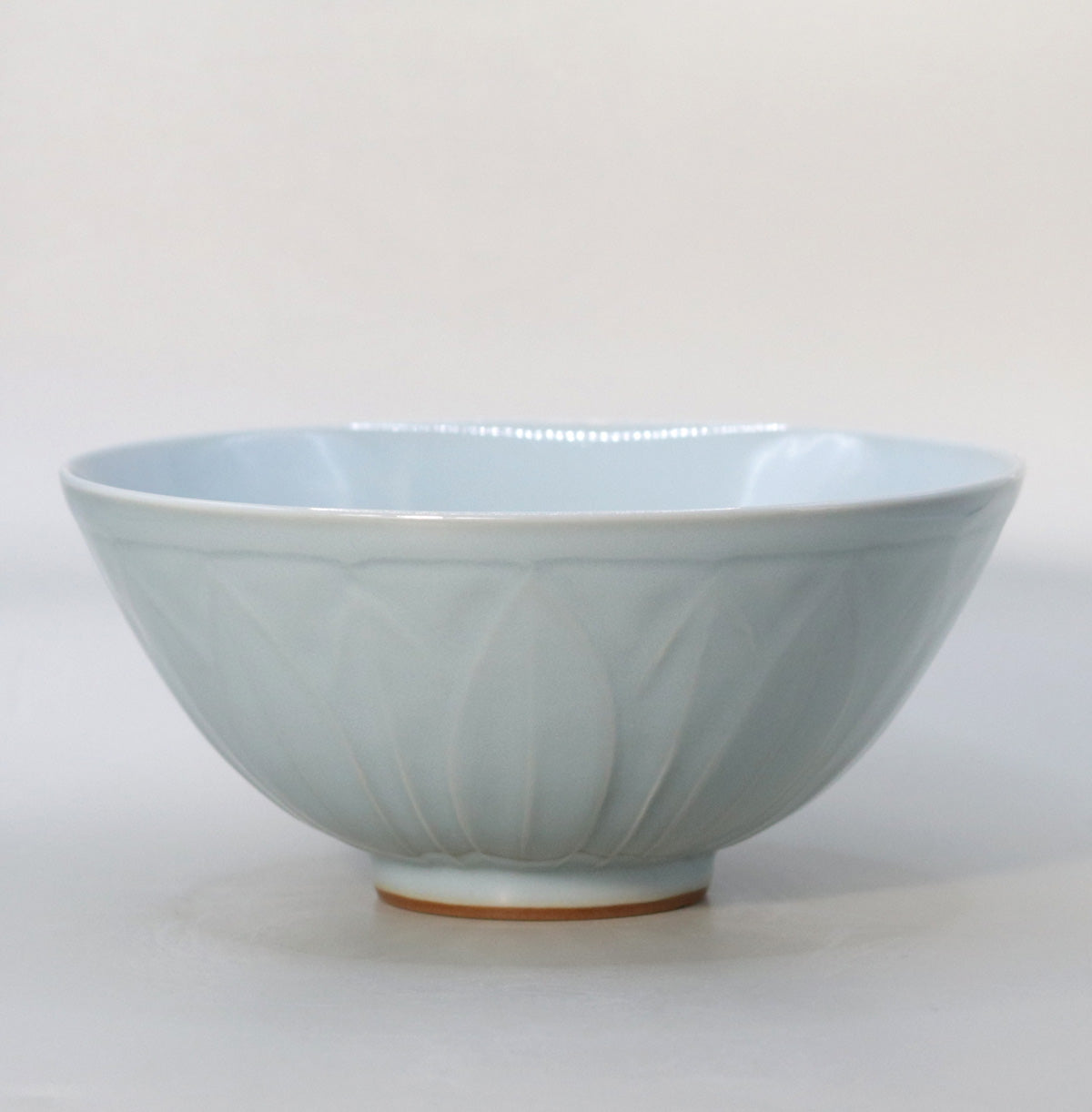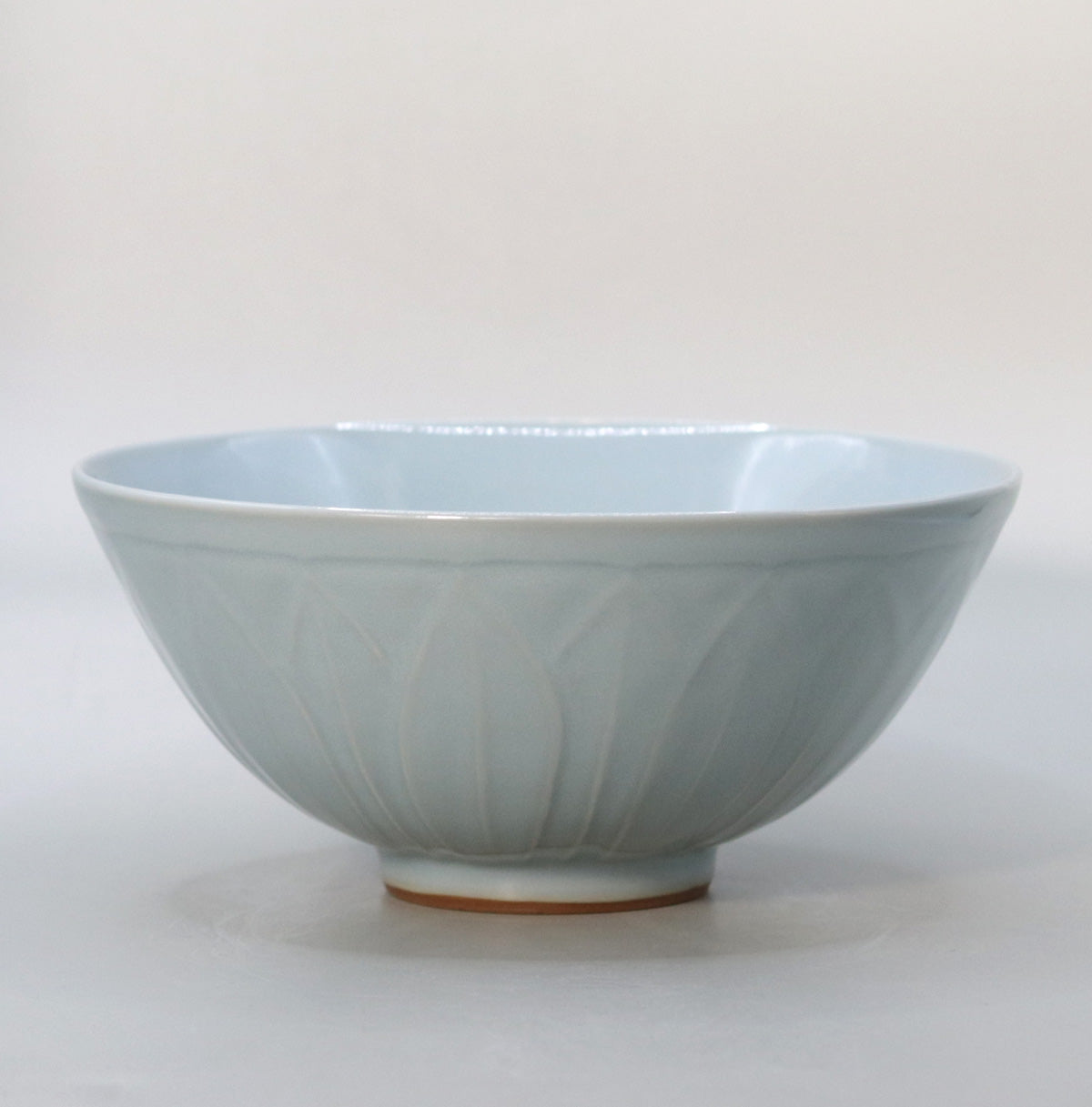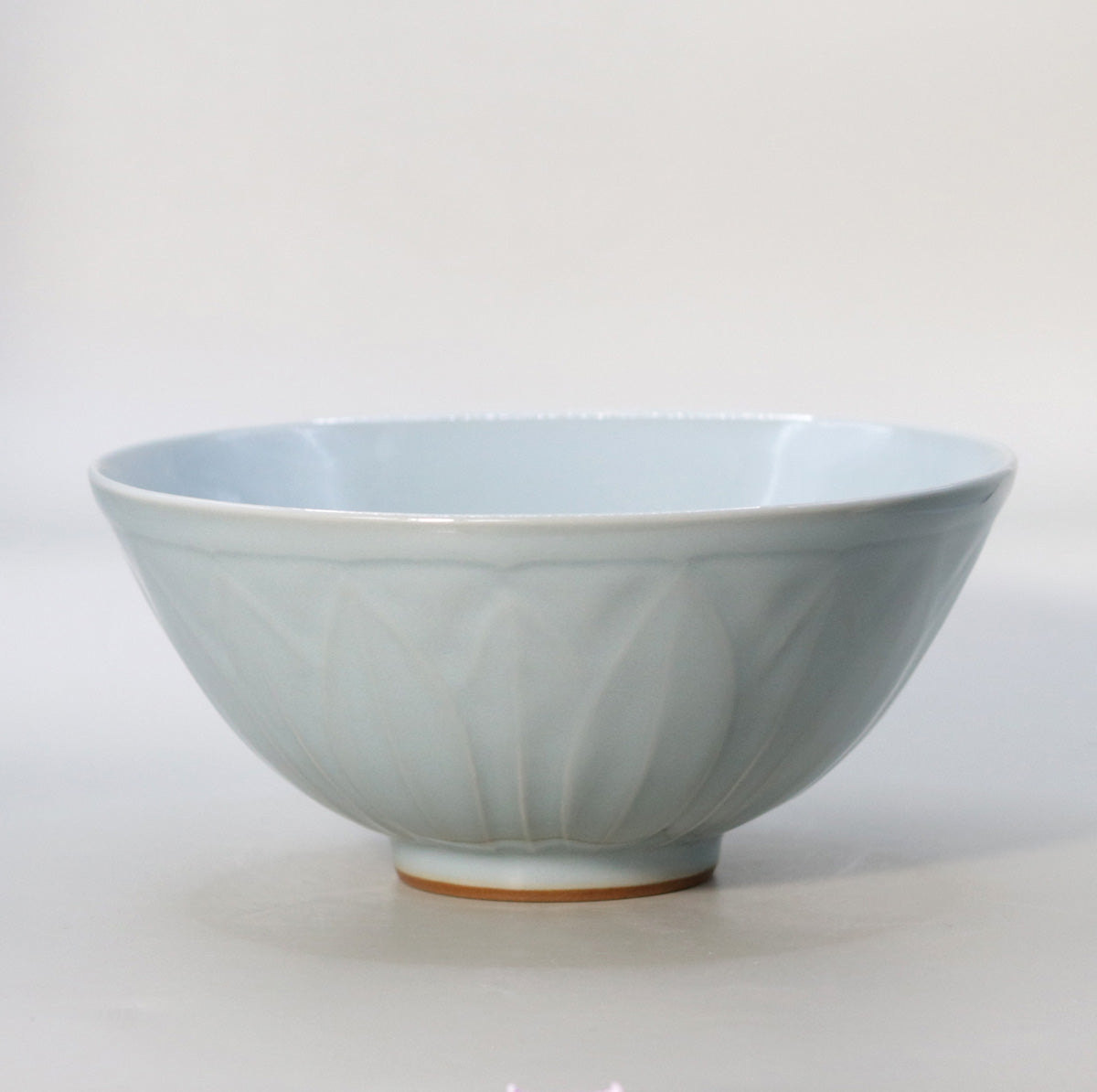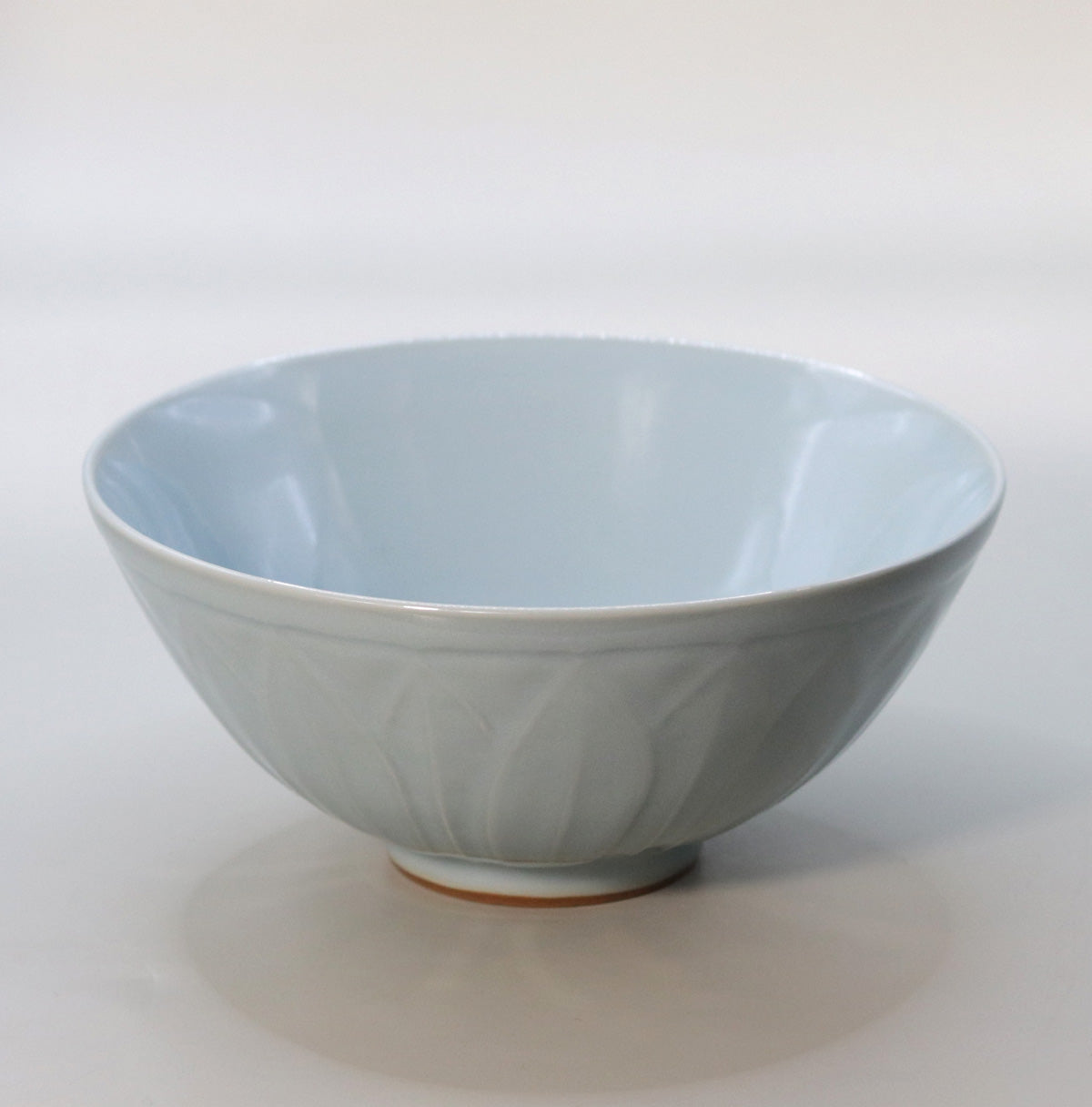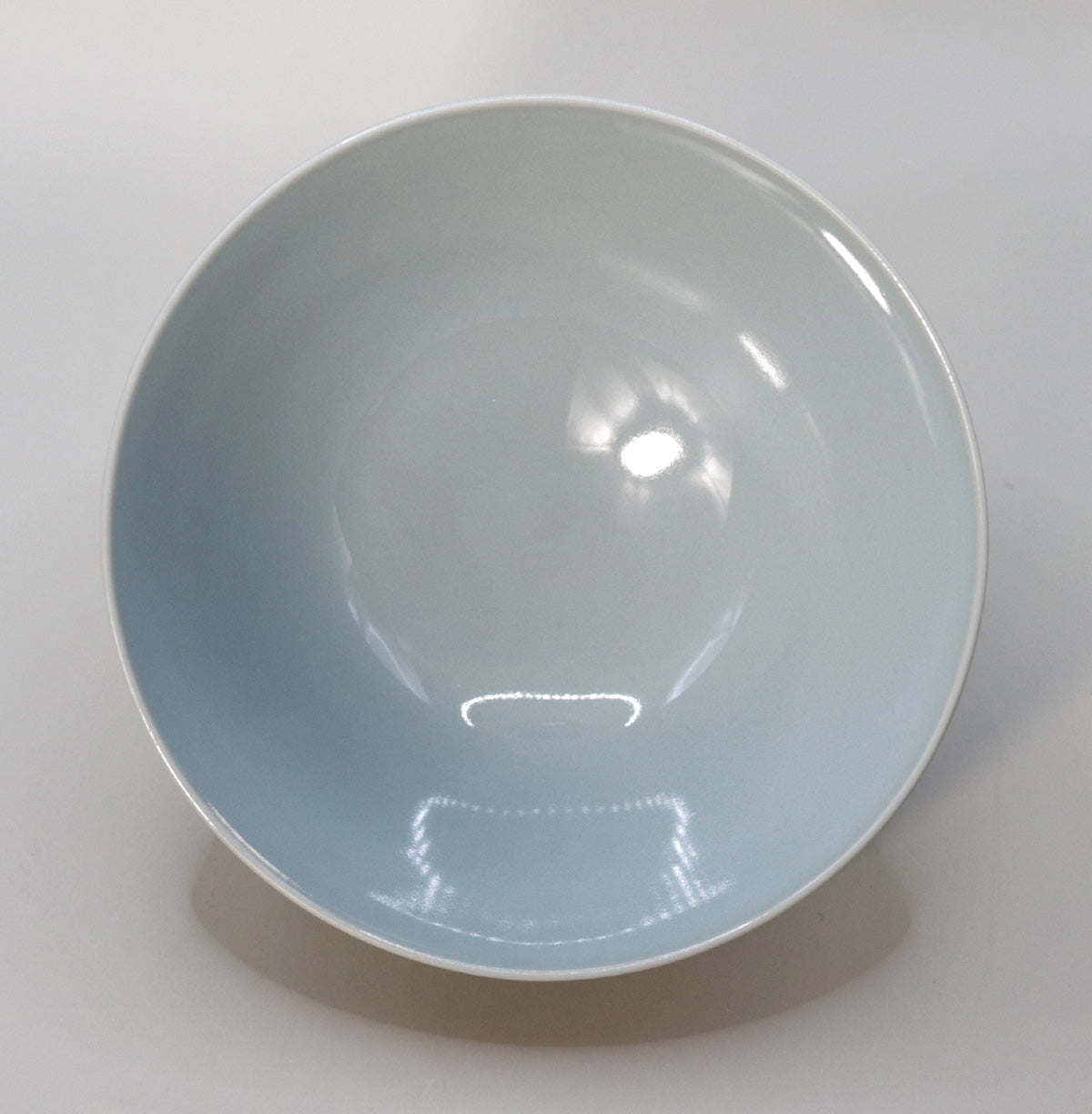Celadon lotus tea bowl, Suwa Sozan
Celadon lotus tea bowl, Suwa Sozan
Couldn't load pickup availability
Width: 15.5cm Height: 7.0cm
I. Work summary
This piece, the "Celadon Lotus Petal Tea Bowl," is modeled after the celadon tea bowls fired at the Longquan kilns during the Southern Song Dynasty, and was created by the fourth generation Suwa Sozan, who inherited the jade color of "Sozan Celadon" that the first generation Suwa Sozan researched for 25 years. The lotus petal pattern that runs around the outside symbolizes the purity and rebirth of the lotus flower, quietly inviting the spirit of "harmony, respect, purity and tranquility" to the tea ceremony.
II. Shape and form
Relationships and Prospects
The rim is slightly curved outwards, with a delicate thickness that does not interfere with the whisk or the mouthfeel. The inside gently widens into a mortar shape, and when matcha is poured in, the green liquid surface rises quietly like a mirror.
Lotus petal carving
The outside of the body is engraved with a series of lotus petals. The carved lines are neither too deep nor too shallow, and as the celadon glaze accumulates and casts a faint shadow, the thickness and overlapping of the lotus petals softly emerge. Another highlight is the "hidden joint" technique, in which the beginning and end of the carving do not overlap, which means that the joints of the ring are visually continuous.
Height and center of gravity design
The base is cut slightly lower and the inside of the base is sharply carved to reduce weight. This keeps the center of gravity low when filled with water, improving stability during the tea ceremony. The iron spots of the clay that can be faintly seen on the side of the base are a small testament to the style of the first generation.
III. Glaze Tone - The Clarity of "Sozan Celadon"
Deep jade color <br data-end="662" data-start="659">The trace amounts of iron (about 1%) contained in the clay and glaze are transformed during reduction firing, resulting in a highly transparent blue-green color. The thickness of the glaze on the ridges of the lotus petals casts a faint shadow depending on the light, emphasizing the three-dimensional effect.
Color differences between inside and outside <br data-end="775" data-start="772">The inside surface is a bright light blue because the glaze is of uniform thickness, while the differences in thickness on the outside surface created by the carving bring out the light and dark shades of jade, and the two layers of blue quietly echo each other.
The feel of the glaze surface<br data-end="847" data-start="844">The glassy surface of the glaze is evenly melted, and is smooth enough to stick to your fingertips. When you hold it in your palm, you can feel the gentle heat and the sensation of becoming one with the vessel.
IV. Historical background and significance of design
The origins of lotus petal writing
During the Southern Song Dynasty, the Longquan kiln frequently used lotus flowers, a Buddhist symbol, on its celadon ware, and they were highly valued at the imperial court and Zen temples. This work captures that spirituality, and reconstructs the number and rhythm of the lotus petals to fit the dimensions of a Japanese tea ceremony.
The Genealogy of Kinuta Celadon Restoration
The first Suwa Sozan completed Sozan Celadon in 1907, and was certified as an Imperial Household Artist in 1917. The fourth Suwa Sozan has maintained the same formula and has stabilized the clear jade color.
Adaptation to modern tea ceremonies
The easy-to-handle dimensions make it suitable for both light and thick tea. It is lightweight and easy to use for display on a shelf or for carrying around in a tea ceremony.
V. Combinations and functional beauty at tea ceremonies
| season | Recommended main dessert | Synergistic effect with the vessel |
|---|---|---|
| spring | Cherry yams and cherry blossom viewing dumplings | The purity of the lotus petals enhances the freshness of the flower. |
| summer | Kuzu Manju/Wakaayu | The cool feeling of celadon helps to ease the heat of midsummer. |
| autumn | Chestnut Yokan and Tsukimi Dango | The jade green reflects the moonlight, deepening the tranquility of the autumn night. |
| winter | Yukihira and Camellia Mochi | The clarity of the glaze evokes a snowy landscape, while the green of the matcha brings out the life in the piece. |
Harmony with Matcha <br data-end="1603" data-start="1600">The vivid green of the matcha stands out against the pale blue of the interior, creating a scene reminiscent of new lotus buds floating in a lotus pond.
Interacting with Light <br data-end="1666" data-start="1663">When illuminated by the warm light of a lantern or candle, soft shadows flicker along the ridges of the lotus petals, and the entire vessel breathes quietly like the surface of water.
Ⅵ. Artist profile and creative approach
The 4th Suwa Sozan (born in Kyoto in 1970) was trained by the 3rd Suwa Sozan and the 12th Nakamura Sotetsu, a lacquer artist , and took over the name in 2002. Based on his research into celadon, he has been exploring a variety of techniques such as hotarude, tobiseiji, and nerikomi celadon, and has adopted the philosophy that "a piece should have a story and be completed in harmony with the user's heart." This tea bowl is designed to convey the "purifying moment when the lotus flower blooms on the water surface at dawn" in the lotus petal pattern, and is imbued with the desire to deliver a quiet sense of purification during the tea ceremony.
VII. Conclusion
The "Celadon Lotus Petal Tea Bowl" is a masterpiece that blends the tranquility of the jade color with the purity of the lotus petals, reviving the elegance of Southern Song Dynasty celadon for the modern tea ceremony. When matcha is poured into it, the green light reflects the lotus pond, inviting the peaceful scenery of the Pure Land into the tea ceremony. This work, which is the culmination of the refined sense of form and glaze control of Suwa Sozan IV, envelops the venue with dignity and tranquility rather than extravagance, and will surely bring a breath of pure peace and rebirth to the hearts of those who see it.
Share
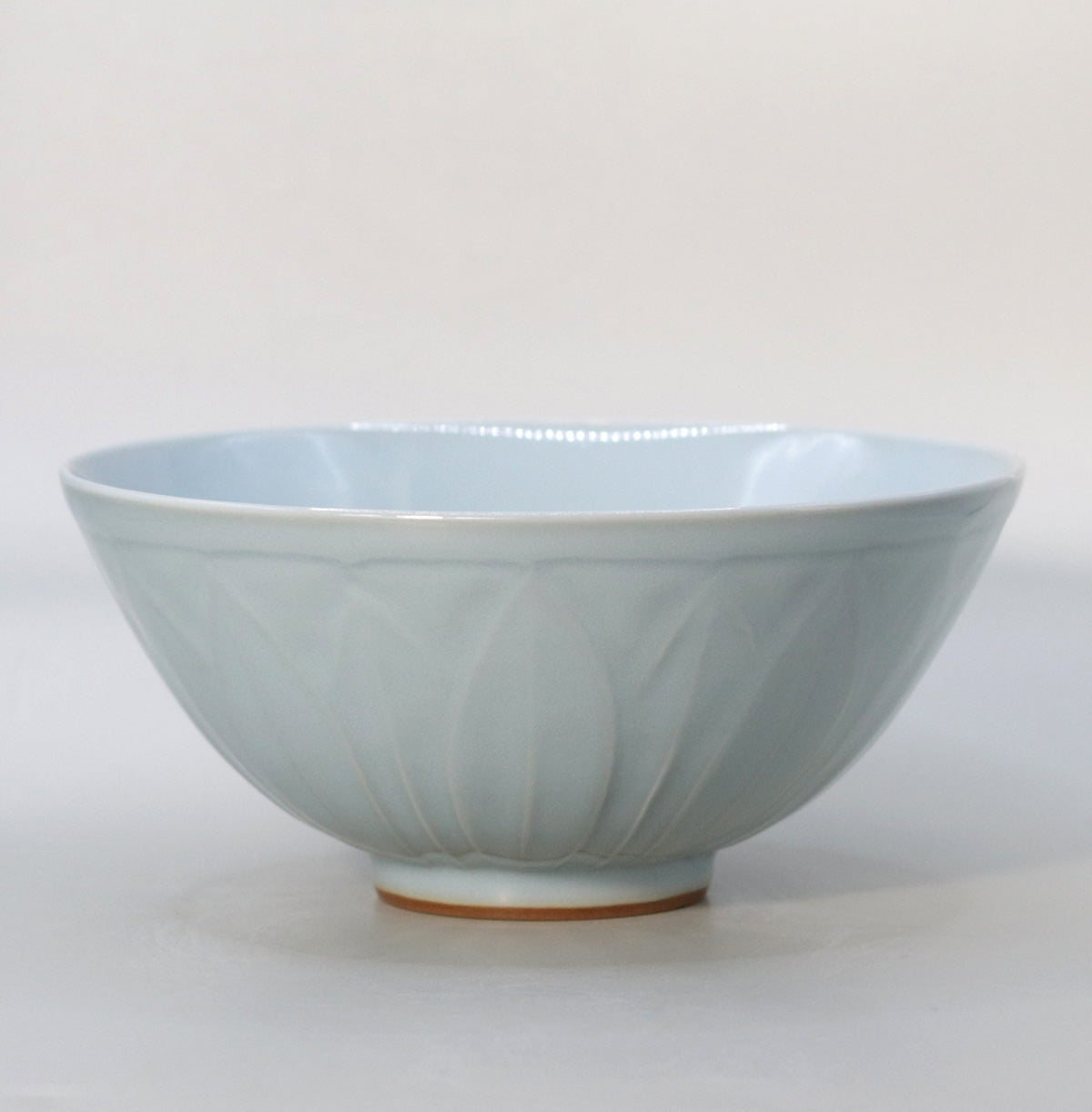
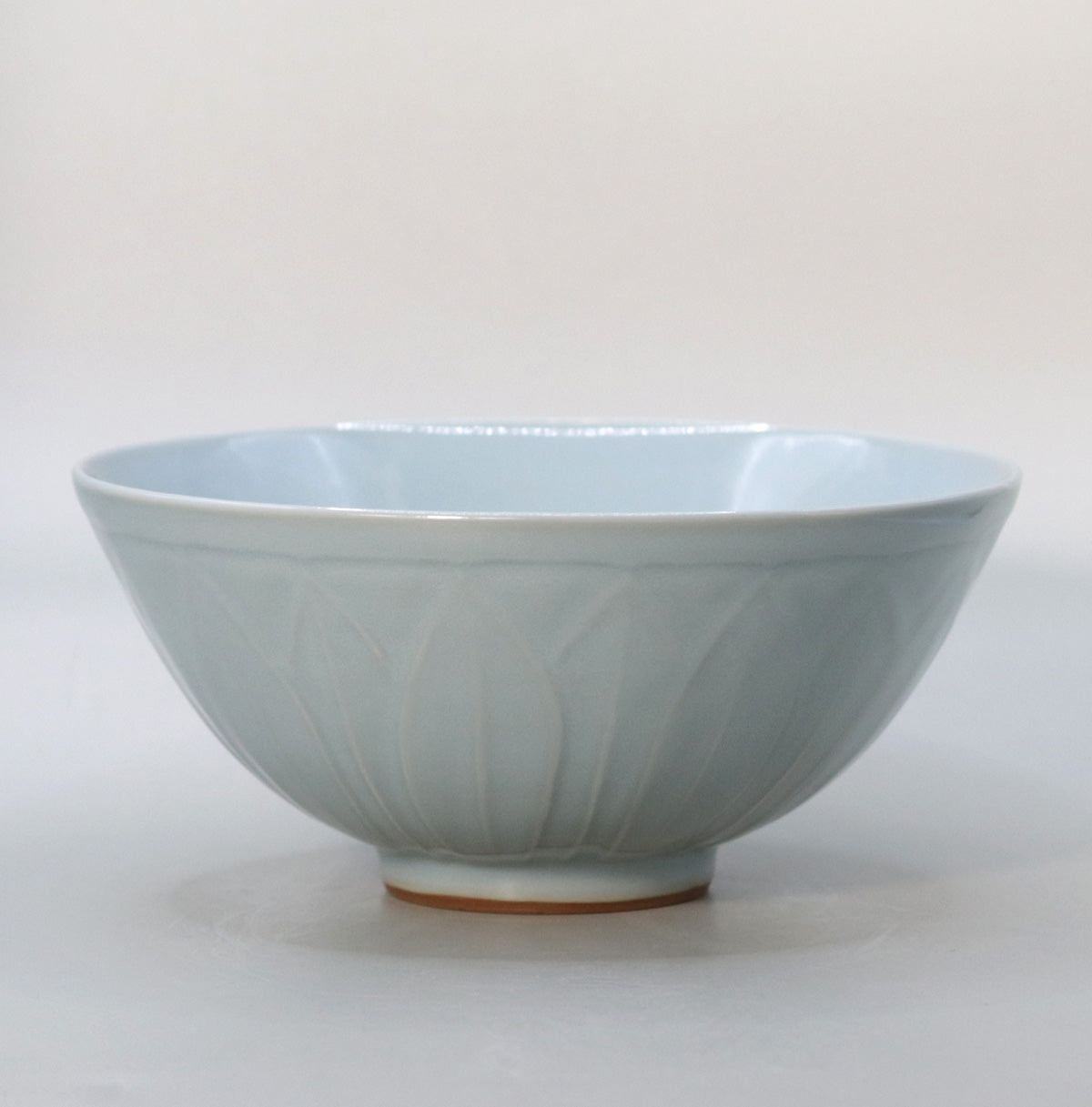

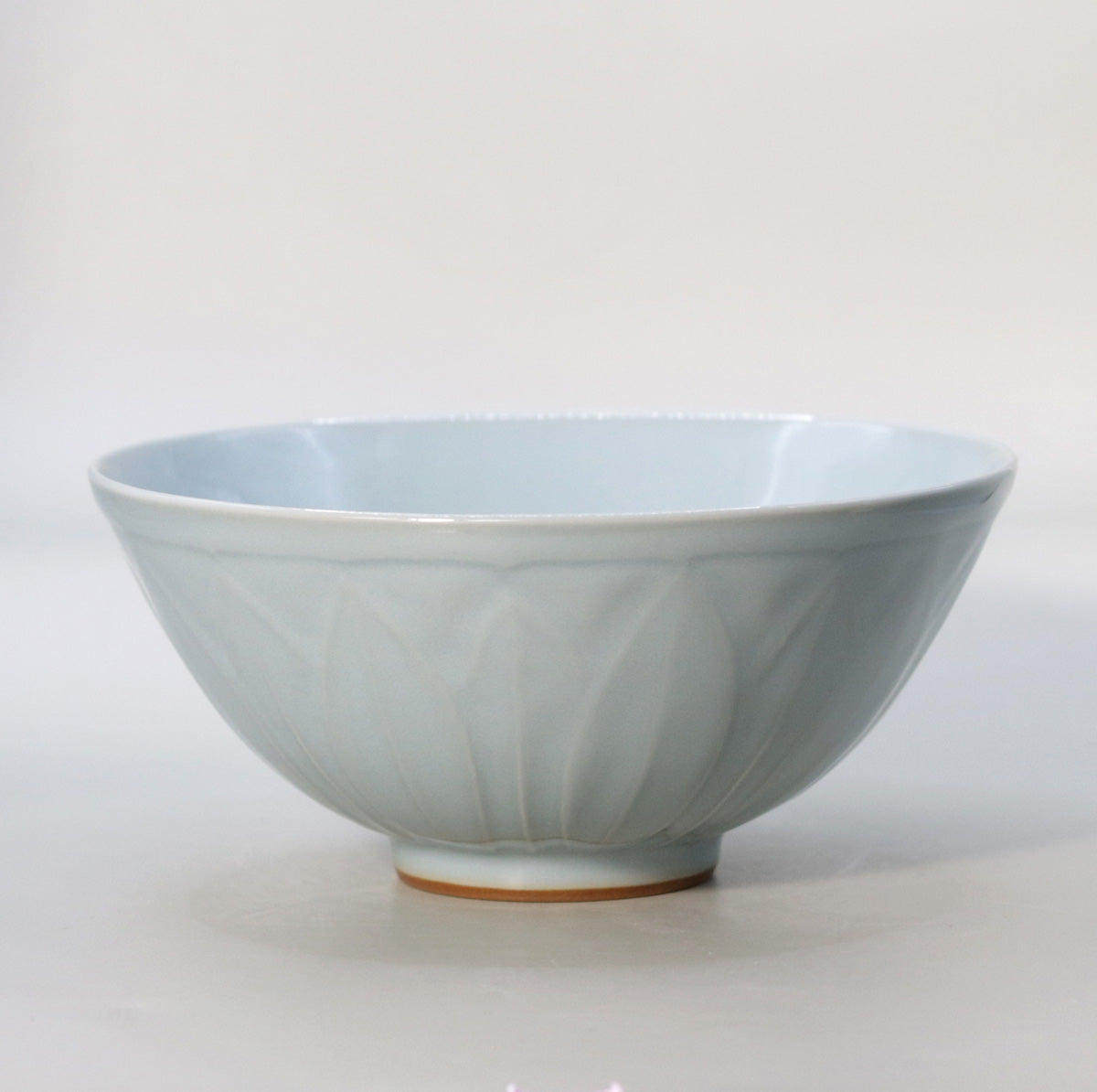
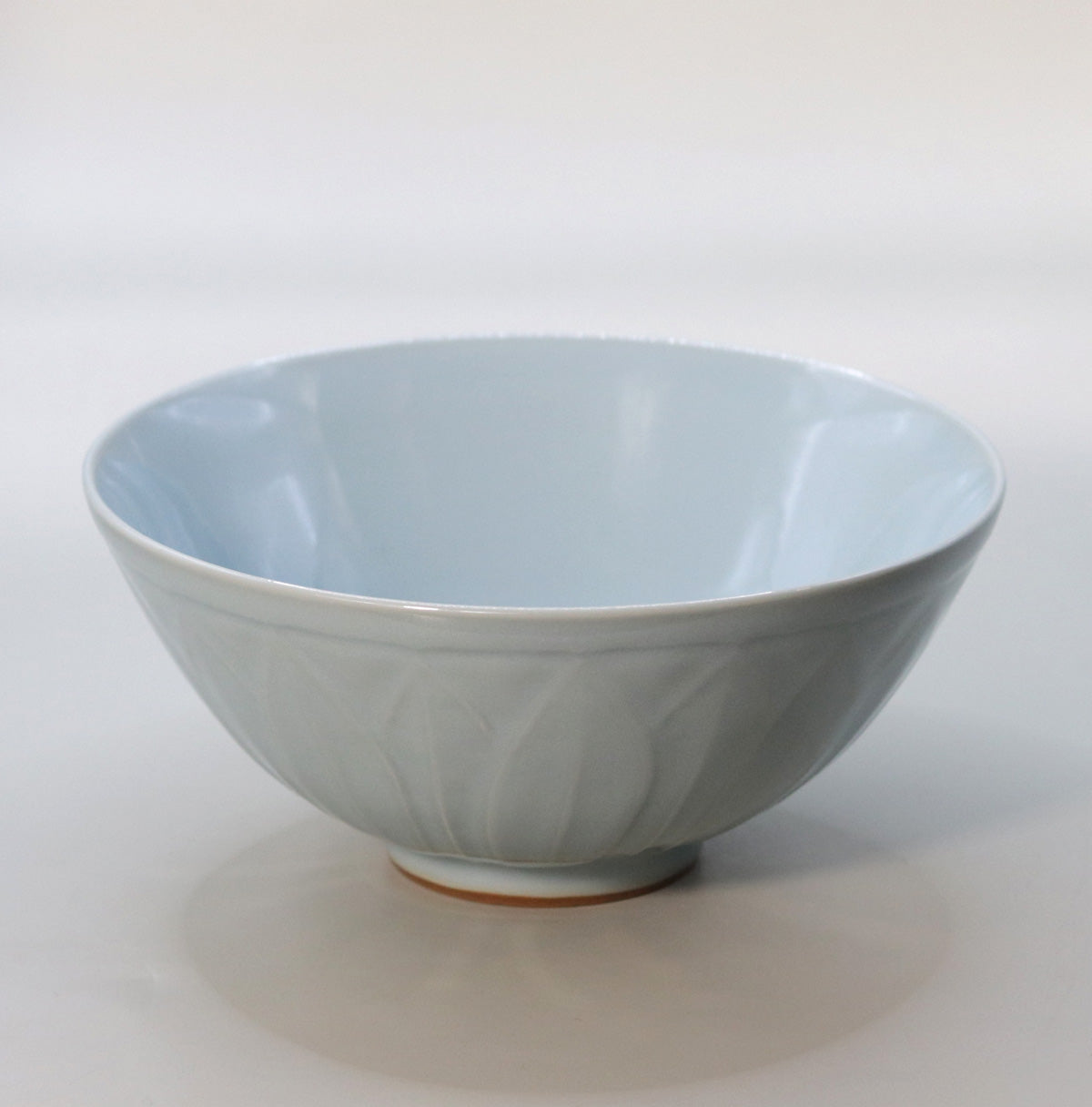


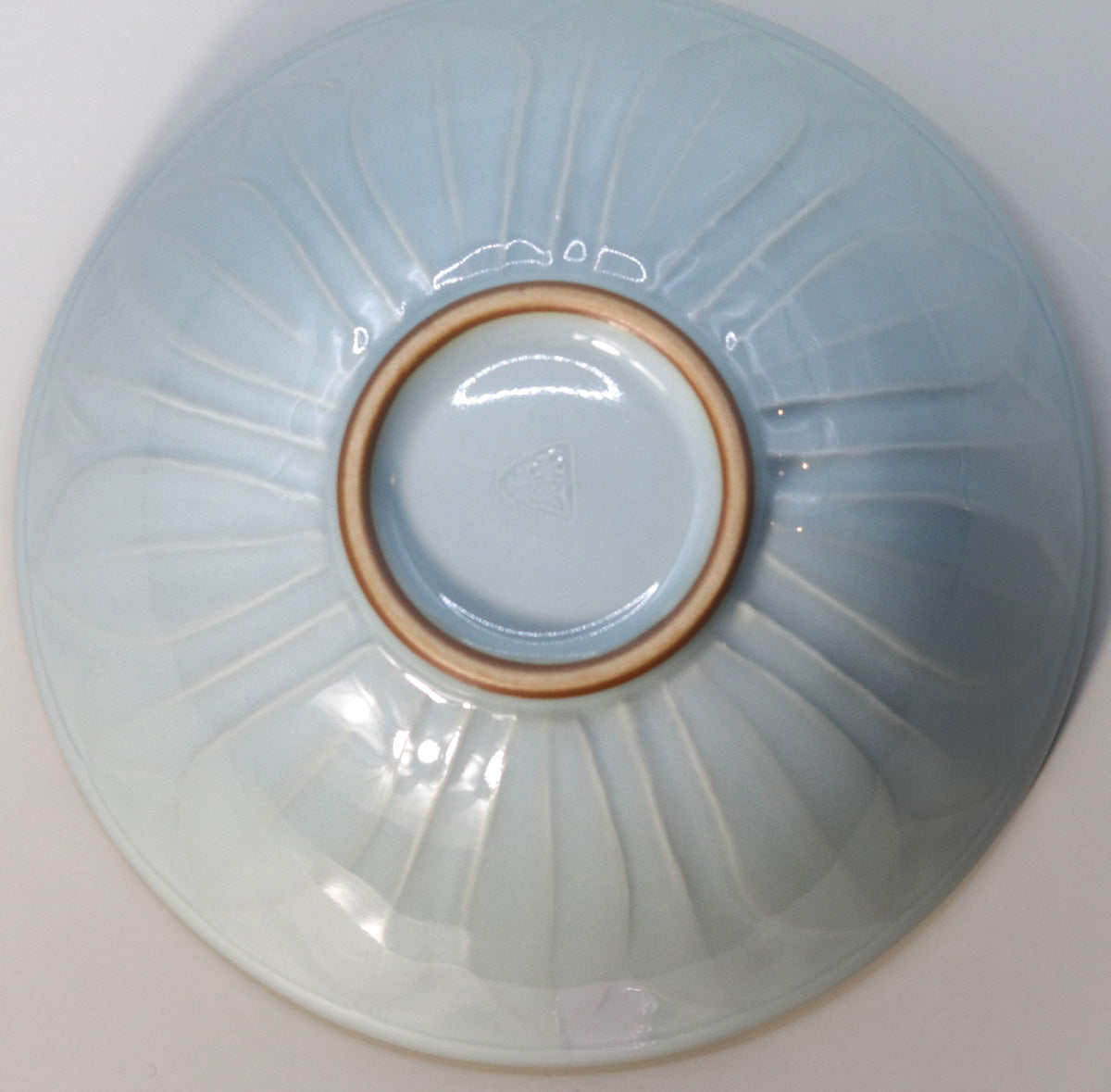
Multi-Column
-
[I will send it to you quickly and carefully]
We carefully package each product in a way that suits it best.
Also, delivery times vary depending on the piece (vessel, etc.).
Items that already come with a box will be shipped within 1-3 days of the order date.
For items that require a box to be made after your order, it will take approximately 30 days for production to be completed and then shipped.
In either case, once we have confirmed your order, we will contact you by email to inform you of the delivery date.
-
[Requests when purchasing pottery]
Even products that look the same may differ slightly in color, shape, size, etc.
The way the glaze is used, the power of the kiln, the firing method, the season, and the humidity also affect the appearance of the pottery.
Please understand the individuality of each piece of pottery and enjoy the unique warmth of handmade.

